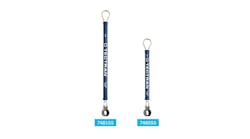Analysis: Wabash faces $462M underride nuclear verdict
How safe is safe enough? Trucking and federal regulators have worked for decades to find an achievable policy balance that serves the public while also allowing businesses to develop and grow. But so-called “nuclear verdicts” are putting a thumb on the scale to benefit a certain sort of attorney and at the expense of about everyone else.
The latest case in point: A St. Louis jury returned a $462 million verdict on September 5, with $450 million designated as punitive damages, in a lawsuit claiming Wabash National should have built a better rear impact guard 20 years ago.
I’m filing this as an opinion blog because this is a story that demands a lot of answers I don’t immediately have: What will this mean for fleets still operating older trailers (or trailers with RIGs spec’d to meet NHTSA standards when stronger upgrades are available)? What will it mean for trailer OEMs that might wonder: What’s the point of federal safety standards if a jury can come back in a decade or two and decide you should’ve done better? And that’s not even scratching the surface of the complicated issues that have created an enviroment where nine-figure nuclear verdicts are no longer suprising—and which are leading to unsustainable trucking insurance rates.
Coincidentally, I was working on a side underride regulation update when the Wabash news landed. More to come there, as well.
Here’s what we do know: Two young men (a father and a father-to-be) died in a 2019 accident when their Volkswagen sedan slammed at highway speed into the back of a tractor-trailer slowed to a near-stop in a construction zone. A toxicology report indicated that the driver was intoxicated at the time of the incident, and a separate police report indicated that neither passenger was wearing their seat belt, according to a filing by the carrier named in the suit, GDS Express. (The carrier no longer has operating authority, per FMCSA records.)
Attorneys for the plaintiffs, surviving family members, argued that a stronger RIG could have saved the lives of the driver and passenger and that Wabash used a design that met the minimum federal requirements in place in 2004 rather than adopting a more robust RIG.
See also: ATRI: Trucking sees increase in 'small' verdicts, settlements
Wabash contended that the collision severity was “far in excess” of that contemplated by the RIG regulations and that the plaintiff’s case—which focused on a RIG design from a decade later—punished Wabash for “current conduct” rather than the conduct related to the accident, a violation of Missouri procedure and even a violation of Wabash’s Constitutional rights, as the company argued in a motion for a partial summary judgment.
For the lawyerly-minded, the docket can be found here on the website for the 22nd Judicial Circuit Court in St. Louis. It features dozens of motions that contest expert testimony, discovery, and the timing of requests for additional documents, lobbying activities, and where steel was sourced, for example. I, however, get nervous when handling legal proceedings, so I will be consulting with transportation law specialists to get their takes on the case.
Mainly, for the sake of fleets and equipment manufacturers, is the jury’s award an outlier, or is this another instance of judgments with little basis in reality? What are the Wabash appeal options and arguments going forward? How can fleets and equipment manufacturers better protect themselves? How can a company defend itself without appearing unsympathetic to accident victims? When will it end?
Reaction came quickly
Wabash
According to a statement, the company is “evaluating all available legal options.” Wabash pointed specifically to the judge’s blocking evidence related to the toxicology report and to the seatbelts.
“While this was a tragic accident, we respectfully disagree with the jury’s verdict and firmly believe it is not supported by the facts or the law,” said Wabash General Counsel and Chief Administrative Officer Kristin Glazner. “No rear impact guard or trailer safety technology has ever existed that would have made a difference here.”
Attorneys for the plaintiffs
“We commend the courage of the families who brought this lawsuit to hold this company accountable for decades of failures to keep the public safe from preventable underride crashes,” said John G. Simon, founder of Simon Law, a firm that specializes in truck accidents according to this promotional video. “And we commend the service of the jurors in this case for sending the message that reckless disregard for human life won’t be tolerated in our community.”
“We hope the decision the jurors reached sends a clear message to the trucking and trailer industry and will finally force them to build safer trailers,” said co-counsel Brian Winebright of Cantor Injury Law.
Safety advocates
“So long as NHTSA abdicates responsibility for protecting road users from underride deaths and injuries, juries like this one in St. Louis will have to use punitive damages to convey to trailer manufacturers the necessity of installing well-designed underride protection on all of their products,” said highway safety advocate Marianne Karth, whose website focuses on underride issues. “The power of life and death is in Wabash’s hands.”
Stay tuned. And stay safe.
This article was originally published on FleetOwner.com.



